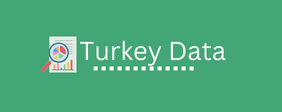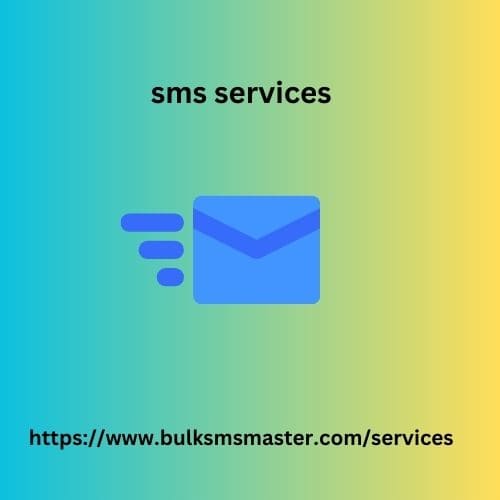Email remains an important bridge between businesses and their customers. But beyond the simple delivery of information, professionally crafted emails have the power to shape perceptions, foster loyalty, and ultimately enhance the customer experience.
A well-written email, free of spelling errors and jargon, not only communicates the message clearly, but also projects a polished and trustworthy brand image. This, in turn, builds confidence and a sense of value in the customer’s mind.
The benefits of professional email sms services communication extend far beyond the initial interaction. When customers feel genuinely heard and cared for through polite and informative emails, it strengthens their emotional connection to your brand. This means greater loyalty and positive word of mouth—a valuable asset in today’s competitive landscape.
Therefore, investing in professional emails isn’t just about efficient communication; it’s about building lasting relationships and fostering brand loyalty. Every interaction, every word, paints a picture of your brand in the eyes of your customers.
In this post, we’ll detail everything you need to know about sending professional emails to your clients.
Pre-writing stage
Before you start sending professional emails to your clients, take the time to solidify the core elements of your email. This pre-writing phase is like building a solid house.
Define Your Purpose
What’s the reason for sending this professional email? Are you making an exciting announcement, delivering an important update, making an enticing special offer, sending a win-back email , or simply fostering goodwill? Knowing the central goal of your message will guide your content and tone.
Take a look at this sample from Figma. The purpose of this email is to provide customers with the latest information about new features and updates.
Know Your Audience
When crafting the content of your professional email, picture your reader. Are they tech-savvy or unfamiliar with jargon? Young and trendy or seasoned professionals? This understanding will dictate the language you use, the level of detail you provide, and even the humor you might incorporate.
Check out this sample from Glitch
Plan your structure
Think of your email as a journey. Create an outline to identify your main points, making sure they flow logically and progress toward your goal. Imagine the recipient taking each step with you, seamlessly reaching your desired outcome.
Compose an email
Now that you’ve determined your purpose and target audience, it’s time to craft your email. Remember, your goal is to connect with your customers in a professional, informative, and engaging way.
Start with an engaging subject line
Think of your subject line as the first impression you make. It should be clear, concise, and inspire the recipient to open the email. Avoid generic phrases like “update” or “just a quick question.” Instead, use action verbs and emphasize the value you provide.
For brevo pricing breakdown: is it worth it for email list growth? example, “Get ready to boost your productivity with our latest tips” or “Exclusive offer: Save 20% on your next purchase.”
Personalize your greetings
Don’t resort to a robotic “Dear Customer.” Address the recipient by name to show you know them. If you have their purchasing history or preferences, subtly reference it to further personalize the message.
State your purpose clearly and early
Get straight to the point in your opening paragraph. Briefly explain the purpose of the email and what the reader hopes to learn or gain by reading the email. This sets the tone and keeps the email focused.
Keep it concise and informative
No one wants to read a novel in their inbox. Aim to be concise and clear. Use bullet points, short paragraphs, and white space to break up the text and make it digestible. But don’t sacrifice the message for brevity. Make sure your email provides all the necessary details and value you promised in the subject line.
Use conversational language
While professionalism is key, avoid japan data sounding too formal or robotic. Use a friendly and conversational tone to engage your readers and make them feel valued. Avoid jargon and technical terms unless absolutely necessary.
Outstanding advantages
Focus on what your email offers your customers. How will it improve their lives, solve their problems, or just make their day easier? Clearly communicate the benefits of your message and how it fits in with their needs and interests.
Include a call to action
Tell your readers what you want them to do after reading your email. This could be visiting a website, making a purchase, responding to a survey, or simply sharing your email with others. Make the call to action clear, specific, and easy to follow.
Proofreading and Editing
Before you hit send, take the time to carefully proofread your email. Typos, grammatical errors, and unprofessional formatting can damage your credibility and leave a negative impression. Make sure your email is neat and error-free.
Other Tips to Remember When Writing Professional Emails
Personalize as much as possible
Personalization starts with the first line of your email. Ditch the generic “Dear Sir/Madam.” Instead, use the recipient’s name. It shows that you’ve done your research and creates a sense of connection. Mention previous interactions, shared projects, or industry news that’s relevant to them. This small gesture demonstrates interest and sets the stage for a more meaningful conversation.
Furthermore, personalization goes beyond just words. Use formatting to make your email more user-friendly. Highlight key points, break up long paragraphs with bullet points, and even include relevant visuals. This shows that you care about your recipient’s time and understanding.
Use humor to add personality
Humor and anecdotes can add personality and make your email stand out. However, proceed with caution. Make sure the humor fits the recipient’s personality and the tone of the email. Inappropriate jokes can backfire and strain your relationship. When in doubt, opt for professionalism.
Maintain a consistent brand voice
With so many emails flooding your customers’ inboxes, how can you stand out? The answer lies in maintaining a consistent brand voice.
Start by clearly defining your brand personality. Are you authoritative and informative like a financial advisor? Friendly and approachable like your local bakery? Creative and fun like a design agency?
Use words and phrases that reflect your brand values and target audience. Create a brand style guide that outlines your preferred tone, language, and even format. Share this guide with your team to ensure everyone is communicating with the same voice.
Once you understand your brand voice, adjust your language for each email. Use formal language when dealing with legal matters, but inject humor or personal anecdotes when interacting with customer service. Remember, even within your brand voice, there’s room for flexibility and nuance.
Respect email etiquette
When crafting emails for clients, remember that respecting etiquette is key to fostering positive relationships. Avoid all caps, excessive exclamation points, and informal language, as these can come across as unprofessional or even offensive. Opt for a formal tone that conveys courtesy and professionalism while still being personable. Remember, your emails are a reflection of your brand, so strive for clear, concise, and error-free communication to leave a lasting impression of reliability and trust.
Respond to customer inquiries promptly
Timely email communication builds trust and fosters positive customer relationships. Every unanswered inquiry is a missed opportunity to engage and reassure. When responding, aim to confirm receipt within 24 hours, even if a full response takes more time. Speed demonstrates respect for your customers’ time and shows that you value their concerns.
Use a professional email address
When crafting professional emails for clients, a key factor is using a professional email address. Ditch the cute nicknames and choose a format that reflects your company’s brand and your role within it. Whether it’s your name or the company name and department, a professional address conveys trust, legitimacy, and seriousness. It shows clients that you’re a dedicated professional, not just someone sending emails from a personal account, and this small detail can play a huge role in building positive relationships and establishing your brand as a reliable source of services.
Consider email marketing tools for automation and analytics
While it’s essential to craft personalized, professional emails for your customers, don’t forget about the efficiency and insights provided by email marketing tools . These tools allow you to automate routine tasks, like welcome series or abandoned cart reminders, freeing you up to focus on personalized responses and complex inquiries. Plus, their powerful analytics can reveal open rates, click-through rates, and engagement patterns, helping you tailor future emails for greater impact.
Summarize
In summary, crafting professional customer emails is an art form that fosters trust and strengthens relationships. Remember to personalize your messages, maintain a consistent brand image, be mindful of etiquette, respond promptly, and use email strategically. By putting these tips into practice, you’ll transform your inbox from a communication channel into a bridge to build lasting connections with your customers. So open your email client, take a deep breath, and dive into the world of professional customer communication. You’ll be surprised at the positive impact it can have on your business and your customers’ experience.

